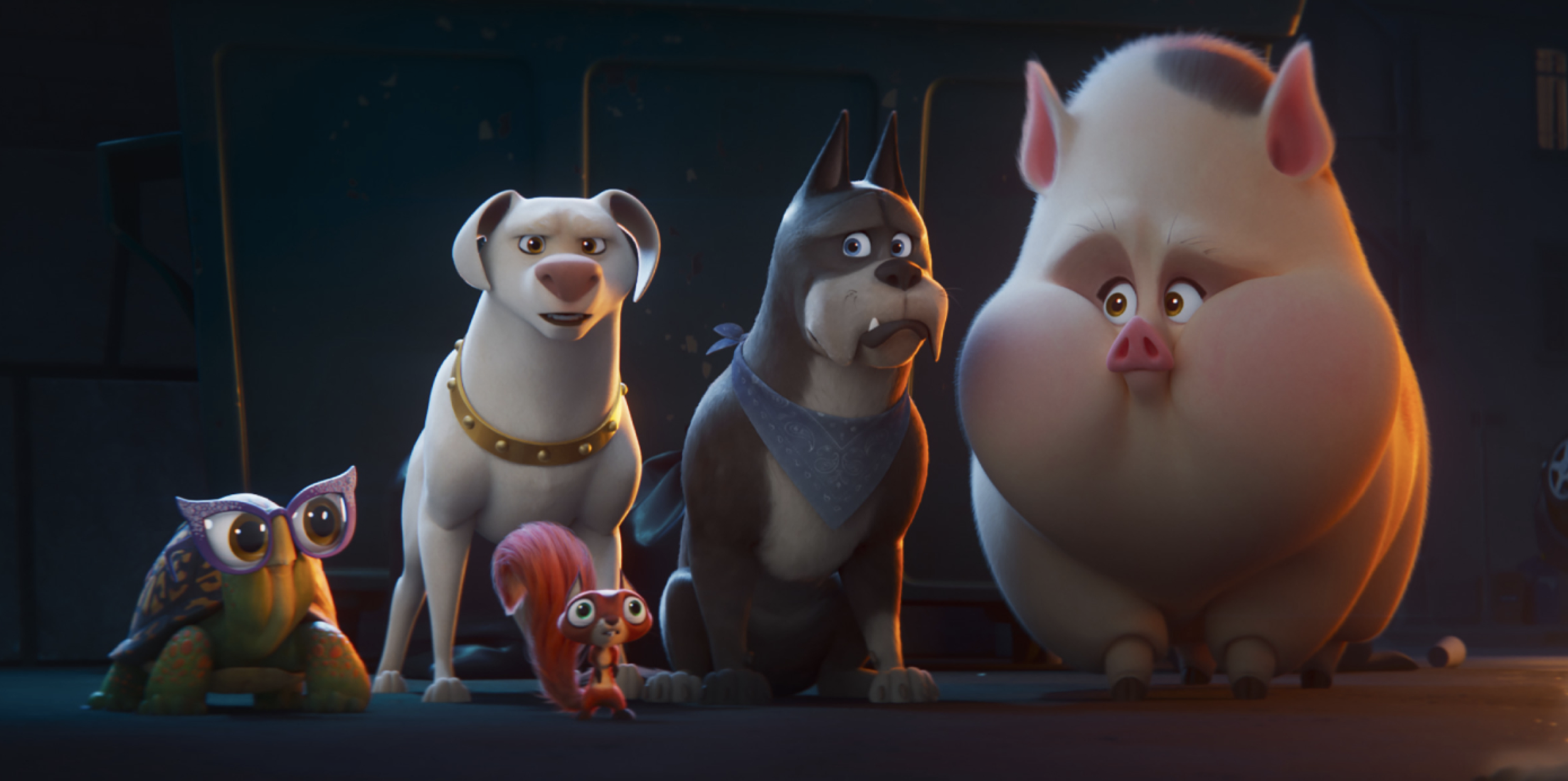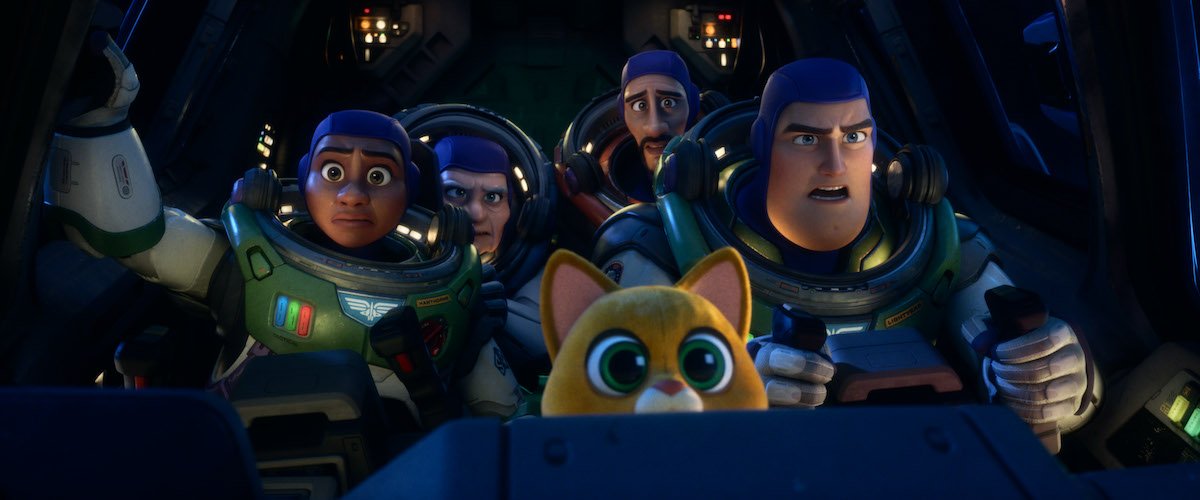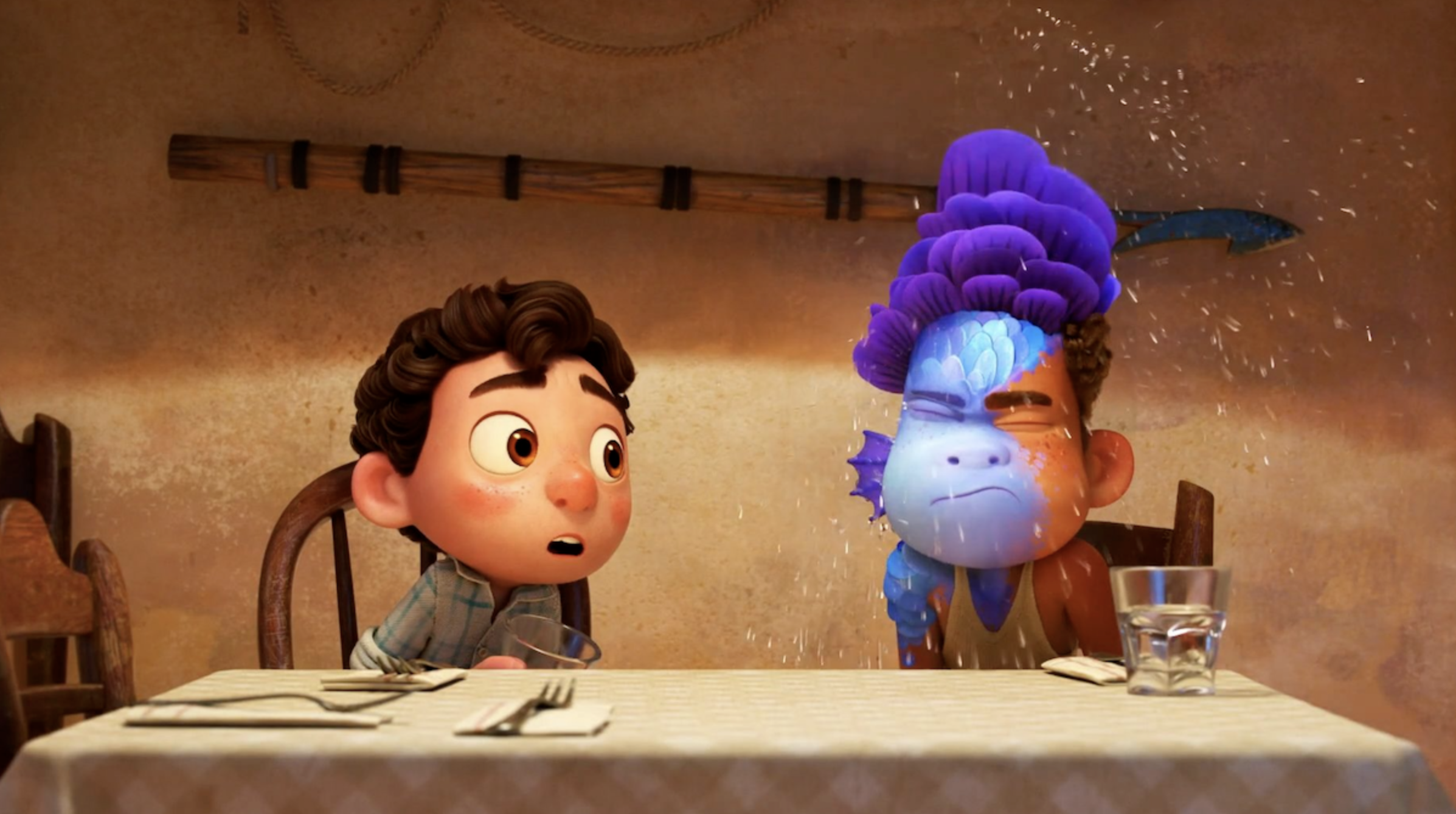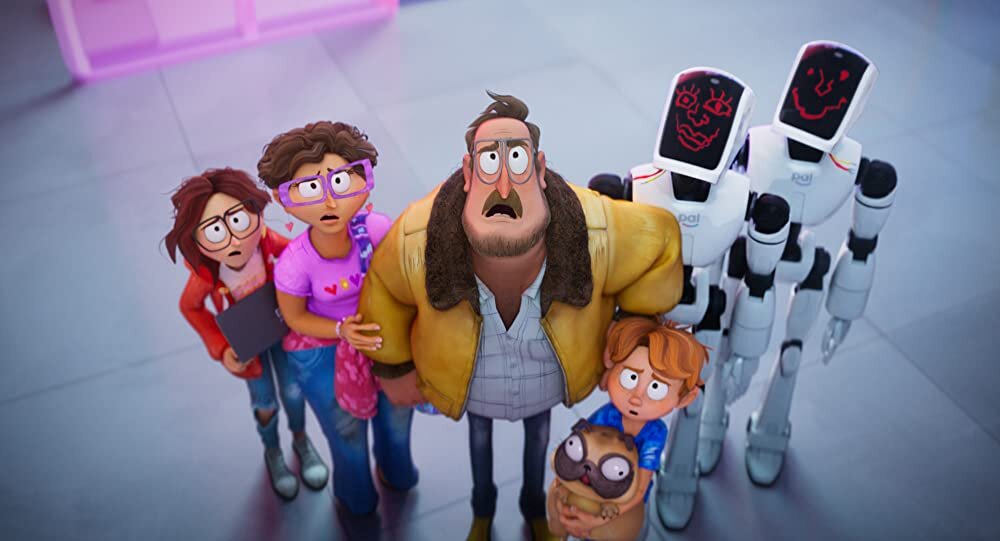DOG MAN
Directing: B
Acting: B
Writing: B
Cinematography: B
Editing: B-
Animation: B
Dog Man is a cute, sweet, sporadically very funny movie, based on a series of graphic novels of the same name by Dav Pilkey, which were themselves a spinoff of Pilkey’s original Captain Underpants illustrated novel series. Dog Man is also overstuffed with antic plotting, and feels a bit overlong even at an 89-minute runtime. Surely young kids will love it; they don’t care about nuances of criticism. As for how the adults will like it when they take children to see it? Well, they won’t likely hate it, at least.
On the topic of animated feature films that manage to reach both children and adults at their own levels simultaneously, Dog Man is impressive in how often it manages this, even without particularly sophisticated or subversively “adult” humor. This movie is wholesome top to bottom, and is only rated PG, I would assume, because of the cartoon violence in it. The protagonist is a loyal dog’s head transplanted onto the body of his beloved police officer master, after all, and director and co-writer Peter Hastings (collaborating with Pilkey on the script) somewhat pointedly skirts past the darker implications there. This means Officer Knight is effectively dead, right? Someone tell all the children in the screenings so they understand! Actually, I’d have more respect for this film if it found some way to say Officer Knight—or his head, anyway—had gone to live on a farm.
Indeed, there is a vibe of some missed opportunity with Dog Man, a film that is filled with self-awareness and packed with jokes and sight gags—I enjoyed the gag where two characters argued on opposite sides of a split screen and one of them literally grabbed the line splitting the image. It’s that kind of subtly meta stuff that really works in this movie. Unfortunately, while many of the jokes land, plenty of them don’t, and the latter happen when the story sags under the weight of its own bloat.
I keep thinking of the halcyon days of the 75-minute animated feature film, something that was far more common roughly thirty years ago and earlier. This is much more appropriate to the attention span of young child audiences, and many animated features in the past decade—specifically those meant for kids—have leaned closer to an hour and 45 minutes. Given the desire for theaters to maximize showtimes and therefore ticket sales, I’m at a loss as to what the endgame is there, unless the skill of the storytelling justifies the length, which is rare. And getting to Dog Man, this is a film that would land far more effectively for adults and children alike with a runtime closer to 75 minutes, but for some reason filmmakers seem to think they need to “flesh out” these stories.
But Dog Man is exceedingly simple: once Dog and Man combine, they become a “Supa Cop,” easily capturing OK City’s biggest villain, Petey the (of course) evil cat—voiced pretty entertainingly by Pete Davidson. He plots to take over the world and rid it of all “do-gooders,” going so far as to clone himself, not realizing the clone will appear as a kitten who won’t grow up for 18 years. “Li’l Petey” (voiced adorably by Lucas Hopkins Calderon) comes out of the clone machine—easily ordered by mail by Petey—with an innocence that, naturally, brings everyone together in the end. Spoilers!
Anyway, Petey is just as good at escaping prison—in an admittedly delightful montage—as Dog Man is at catching him, so this just becomes a cycle until Petey ups the ante with all manner of wild inventions, including my favorite: a robot he calls “80-Hexatron Droidformigon,” or “80-HD.” The robot becomes a quasi-character in its own right, although the rest of the cast is much more amusing, including Lil Red Howery as Dog Man’s bumbling police Chief; Cheri Oteri as OK City’s comically corrupt Mayor; Isla Fisher as ambitious TV reporter Sarah Hatoff; Stephen Root as Petey’s deadbeat dad; and Ricky Gervais as the movie’s most baffling character, an evil fish villain named Flippy. (Look for the obvious Aliens reference when Flippy goes after Li’l Petey and Petey shouts, “Get away from him you fish!”)
Flippy makes a nice segue into what doesn’t work all that well in Dog Man. Flippy serves as a villain to unite all the others against, but the plot mechanics are unnecessarily convoluted, and the “climactic” sequence this ushers in is less exciting than it is baffling. Literal buildings are brought to life as sort of building-monsters that wreak havoc, almost Gozilla-style. Dog Man winds up operating a giant “Mecha Mail Man” to battle them with. It’s all very: what? Although it still gets a few funny gags, none of it really works as well as the rest of the movie does.
Ultimately, Dog Man falls into the same trap nearly every other superhero movie does, predictably ending in a massive, ridiculously high-stakes battle blowout. Who the hell created the rule that every superhero movie has to end this way? Peter Hastings does smuggle in a subtle (and very brief) commentary on this very trope, but while also fully participating in it. I’d have much preferred a resolution only between Dog Man, Petey and Li’l Petey without any involvement with a supervillain fish and monster buildings. And haven’t we had enough of Ricky Gervais anyway? There’s a man who started off strong and then long outlasted his welcome.
To be fair, as “superhero movies” go, Dog Man is unlike any other. It just would have been far more successful, even on its own terms, with some script polishing and tightening of the editing. It wasn’t what I wanted nor what it could have been, but to its credit, I still had a good time. And none of my criticisms will mean anything whatsoever to a seven-year-old who will certainly have a blast watching it.
Just do your job Dog Man!
Overall: B










